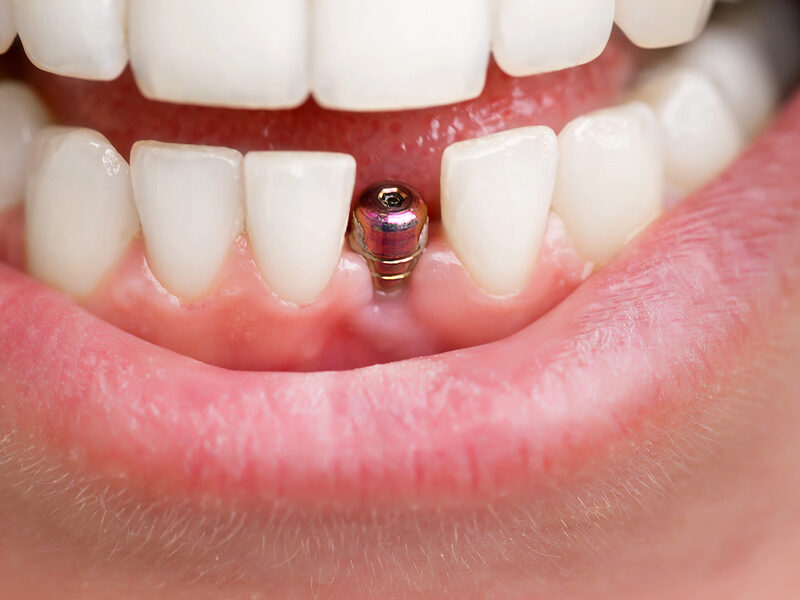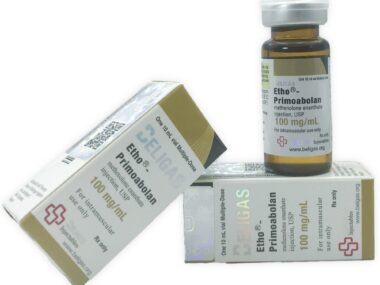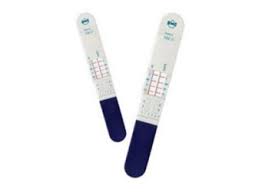A dental implant (also known as an endosseous implant or fixture) is a prosthesis that connects to the jaw or skull bone to support a dental prosthesis such as a crown, bridge, denture, or facial prosthesis, or to act as an orthodontic anchor. The biologic process of Osseo integration, in which materials like titanium or zirconia develop an intimate relationship with bone, provides the foundation for modern dental implants. The implant fixture is inserted first to ensure that it will osseointegrate, and then a dental prosthetic is attached. Before either a dental prosthetic (a tooth, bridge, or denture) is attached to the implant or an abutment is inserted to hold a bridge, a certain period of healing time is required for osseointegration.
Medical uses
Dental implants are primarily used to support dental prosthesis (i.e. false teeth). Osseointegration, a biologic process in which bone bonds securely to the surface of particular materials like titanium and some ceramics, is used in modern dental implants. Implant and bone integration can withstand physical demands for decades without failure.
The US has seen an increasing use of dental implants, with usage increasing from 0.7% of patients missing at least one tooth (1999 – 2000), to 5.7% (2015 – 2016), and was projected to potentially reach 26% in 2026. Implants are used to replace missing individual teeth (single tooth restorations), multiple teeth, or to restore edentulous dental arches (implant retained fixed bridge, implant-supported over denture).Do note that alternative treatments to tooth loss are available (see Missing tooth replacement, Tooth Loss).
Dental implants are also used in orthodontics to provide anchorage (orthodontic mini implants).
Main surgical process
Most implant systems have five basic steps for placement of each implant:
- Soft tissue reflection: An incision is made above the crest of the bone, nearly dividing the thicker connected gingiva in half, resulting in a thick band of tissue around the final implant. To reveal the bone, the margins of tissue, referred to as flaps, are pulled back. Flapless surgery is a procedure that involves removing a small punch of tissue (the diameter of the implant) rather than raising flaps to put the implant.
- High-speed drilling: After reflecting the soft tissue and, if necessary, using a surgical guide or stent, pilot holes are drilled with precision drills at a controlled pace to avoid burning or pressure necrosis of the bone.
- Low-speed drilling: The pilot hole is slowly widened by employing broader drills (typically between three and seven successive drilling steps, depending on implant width and length). It is important not to overheat the osteoblasts or bone cells. The temperature is kept low by using a cooling saline or water spray.
- Implant placement: The implant screw is inserted and, if self-tapping, the prepared site is tapped with an implant analogue. It’s then put into place using a torque controlled tool at a specific torque so the surrounding bone isn’t overloaded (overloaded bone can die, a condition called osteonecrosis, which may lead to failure of the implant to fully integrate or bond with the jawbone).
- Tissue adaptation: The gingiva is adapted around the entire implant to provide a thick band of healthy tissue around the healing abutment. In contrast, an implant can be “buried”, where the top of the implant is sealed with a cover screw and the tissue is closed to completely cover it. A second procedure would then be required to uncover the implant at a later date
Implant aftercare consists of:
- Antibiotics to prevent infection
- Eating only soft foods during the healing process
- Brushing and flossing twice a day and practicing excellent oral health care
- Avoiding alcohol, caffeine, and tobacco
Pros of Dental Implants
- Most permanent solution available (crown may last 15 years)
- Look more natural
- Less damage to your surrounding teeth and jaw
- 97 percent success rate after 10 years 2
Cons of Dental Implants
- More expensive than bridges
- Probably not covered by insurance
- Longer healing process (up to six months)
- Complications are rare but serious
The following are estimated expenses for various types of implants:
| Single Tooth Implant | $3,000 to $4,000 |
| Implant-Supported Bridge | $5,000 to $16,000 |
| Implant-Retained Dentures | $12,000 to $30,000 |
| 3-on-6 Dental Implants | $10,000 to $15,000 |
| All-on-4 Dental Implants | $15,000 to $20,000 (per arch) |
Benefits
There’s no reason to hide your smile throughout your life. Almost everyone can get a smile makeover with today’s dental technology. Dental implants are a safe and secure grin option for anyone who has lost teeth due to injury, periodontal disease, or other factors. Dr. Siman can help you with anything from a bridge to a full mouth reconstruction. Don’t let missing teeth affect the way you chew, smile, or live.
Long-Lasting
Dental implants are so strong and secure they can last for decades. Brush and floss daily and visit us for regular checkups twice a year.
Comfort
No discomfort, no worrying about the security of the tooth restoration. You don’t have to take the implants out to clean them. Implants function as your own teeth.
Improved Quality Of Life
Whether it’s one missing tooth or an entire arch of teeth, having an incomplete smile can make you feel bad about yourself and your appearance. Restoring those teeth and completing your smile will improve the function and appearance of your teeth and, thereby, your quality of life.
The 9 Best Countries for Dental Implants
- Turkey. It’s no surprise that Turkey is consistently ranked as one of the top countries for dental implant
- Hungary. Hungary is well known for being one of the best countries for dental implants.
- Croatia best for dental implant
- Poland is also well known for being best for dental implant
- Czech Republic is one of the greatest country for dental implant
- Mexico also good for dental implant
- Germany best for dental implant and last one is
- Thailand.



